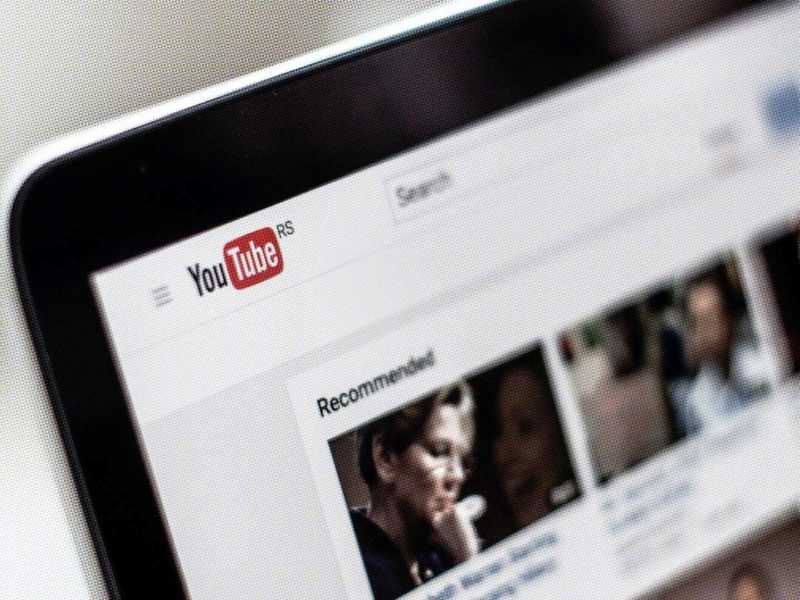Smart, unobtrusive and with real added value, native advertising is convincing as a comparatively elegant option for digital advertising. The idea behind it: Ads that provide users with relevant content and entertainment and, in this context, also deliver gentle recommendations for products and services.
Native ads typically fit seamlessly and naturally into editorial content on a website, staying true to or mimicking the style and format of the digital platform in question. For companies, this has the advantage, among other things, of creating touchpoints and addressing desired target groups, but not making them feel weighed down by intrusive advertising.
Benefits an advantages of Native Ads
Possible implementations of Native Ads
The question of the target group
(More) mistakes that repeatedly determine the success or failure of native ads
Native Ads: The most important aspects and tips at a glance
Benefits and advantages of Native Ads
Used correctly and effectively, Native Ads offer some very relevant advantages – especially compared to traditional ad formats:
- Optimized targeting: Native ads can be tailored to specific target groups – ideal for addressing potential customers in a targeted and sustainable manner.
- Effective lead generation: Not only the respective target group becomes aware of certain products and services through native ads, but also customers who are interested in similar content.
- Increasing brand awareness: Native advertising is a sensible and recommendable means for companies to increase their brand awareness. The brand is presented unobtrusively in an environment that is as natural as possible. This subtly creates important touchpoints with the relevant user group, which is constantly reminded of the brand.
- Increased credibility: Compared to conventional ad formats, users often recognize native ads as much higher quality and relevant in terms of content. Convincing content offers added value, and for this reason alone it appears credible and trustworthy.
- Increased engagement rates: Trustworthy and interesting content encourages users to engage with the content instead of just skimming or even ignoring it. This significantly increases engagement rates.
Possible implementations of Native Ads
The possibilities of using native ads on websites and digital platforms are very versatile. Here is a brief overview of implementation types that prove useful and effective time and time again:
Sponsored posts and advertorials are ads in the form of editorial content. They can present themselves as technical articles, articles or even videos created or sponsored by a target website.
Recommended contents
Within the news feed or following articles or posts on a website, recommendations can usually be placed for other articles that fit the topic or complement it in a meaningful way. Native ads can also be used effectively here.
In the context of social media, native ads can often be implemented very successfully when companies hire influencers to promote a service or product. The influencer community generally trusts their reliability and trustworthiness and is therefore more likely to accept recommendations. Sponsored content in this context can therefore be very successful for companies.
Product placements
Native advertising can also function as product placement. In this case, the respective product or service is integrated as naturally as possible into the content of a medium. The positive effect of this type of native ads is used in films, for example. Here, corresponding products, such as beverages or certain technical devices (notebooks, etc.), can be placed in a meaningful way so that they are reliably perceived but not perceived as annoying.
In-feed ads
In-feed ads appear to users as updates or regular posts on social networks or in the news feed.
In order to implement native ads as sensibly as possible, it is important to consider the various advantages and challenges that the individual formats bring with them. This depends primarily on the specific goals of a campaign and the target group to be reached.
The question of the target group
Various factors contribute to the decision as to exactly which target group is addressed and how a target group can be meaningfully narrowed down. Important here are first and foremost:
- The type of product or service: Just as a health brand or service should target people with specific health needs and interests, luxury brands, for example, address people or age groups with a higher income level. Consequently, the target group must be defined according to what type of product or service is being promoted.
- Format and platform: Ads on social media platforms such as Instagram or TikTok are primarily suitable for a younger target group. If an older target group or targeted academics are to be reached, on the other hand, high-quality magazines, trade journals or daily newspapers are more suitable. So platform and format also determine the success of native advertising campaigns.
- Geographical location: Consideration of local options for news ads has taken a bit of a back seat due to the Internet, digitization and global networking.
- Demographic characteristics: Age, gender, education level, and income are considered the most important demographic characteristics to consider when selecting a target audience for native advertising. The example of automobiles can serve here: Native ads for luxury vehicles, for example, are aimed at a different target group than ads for mid-range cars – or even those who want to get from A to B exclusively by hybrid or electric means.
As a general rule, native ads and basically ads of any kind must necessarily satisfy the needs and interests of the respective target group in order to really catch on or, ideally, leave a lasting impression. If there is no direct reference to the target group, the campaign will most likely not be able to achieve the desired success.
(More) mistakes that repeatedly determine the success or failure of native ads
It should already have become clear that the target group definition contributes significantly to the success of campaigns. But there are other (common) mistakes that can have an influence.
- Inappropriate content: If ads or posts are irrelevant, of poor quality, or not engaging, in most cases this will result in users not even noticing or ignoring them. Advertising content must therefore be both relevant and interesting for the target group, as well as fit into the context of the surrounding content and be attractively designed.
- Poor integration: Native ads should blend in as naturally as possible with the surrounding content. The trick is to still create engaging content that is unobtrusive and not perceived as distracting, but still catches the eye.
- No call-to-action: “Unobtrusive” in the case of native ads does not mean that ads must not contain a call to action. On the contrary, native ads should provide gentle recommendations and motivate users to take advantage of certain products or services via well-founded contributions. If users then do not know how to proceed or where exactly they can make use of them, they may be lost as potential customers.
- Missing tracking/lack of optimization: Monitoring campaigns is essential. A/B tests, for example, make it possible to see which ads and formats work very well and which work less well – the basis for optimization and ultimately success.
- Misleading labeling: Native advertising is an ad format and must therefore be labeled as advertising (and, above all, sufficiently so). If such labeling is missing or if an ad is deliberately disguised as editorial content, this can be considered misleading or deceptive. As a consequence, not only a Google penalty is to be expected, but also a loss of trust on the part of the users.
Native ads should unobtrusively and reliably address the right target group, create touchpoints that convince through added value, and thus build trust with users.
So for companies, compared to obvious and rather confrontational promotional content, native ads offer the opportunity to reach users in a way that offers them real added value. Products or services are presented in a relevant and trustworthy context, which ideally already answers initial questions about a specific target group topic and is thus more likely to convince them.
Native Ads: The most important aspects and tips at a glance
- Target group: Who is the target group and what are their interests and questions? How should ads be designed to appeal to this target group?
- Context and integration: Ads should embed naturally in the surrounding environment. Editorial content must look unobtrusive and feel native.
- Added value: The focus is on relevant and useful information. You can also address questions of the target group instead of referring to the product or service.
- Design and visual elements: Images or videos make ads look more eye-catching and appealing.
- Transparency: confusion and deception can have serious and long-term consequences among users. It is essential that the ads are clearly marked as advertising.
- Tracking and optimization: Running A/B tests, monitoring engagement rates, and other relevant metrics are essential to ensure that the desired results are achieved. If this is not the case, the campaign must be optimized accordingly.
- The call-to-action: a clear call to action is also mandatory for native ads, because it encourages users to click on the website
Companies can increase their brand awareness via effective and sustainable native advertising campaigns and subsequently expect significant increases in sales. This type of advertising is particularly relevant because – used sensibly and correctly – it establishes a relationship of trust with users and the desired target group as well as potential customers in an unobtrusive and connecting way. This is one of the biggest advantages compared to conventional advertising formats, which tend to motivate in the short term and bind customers less.






